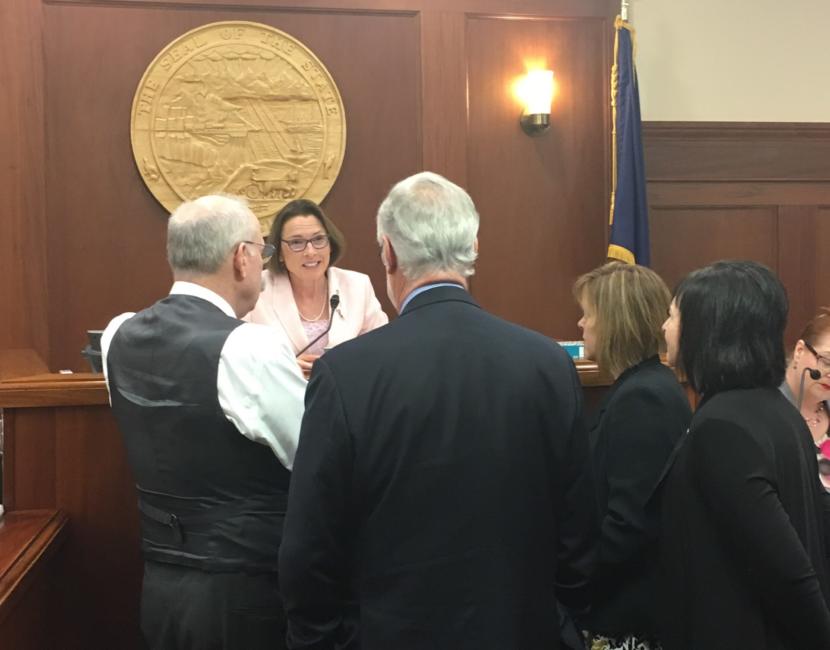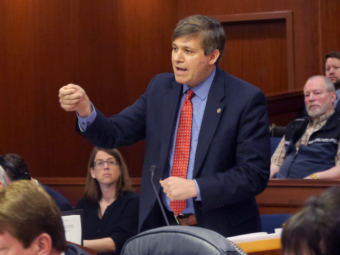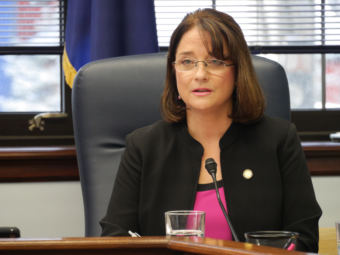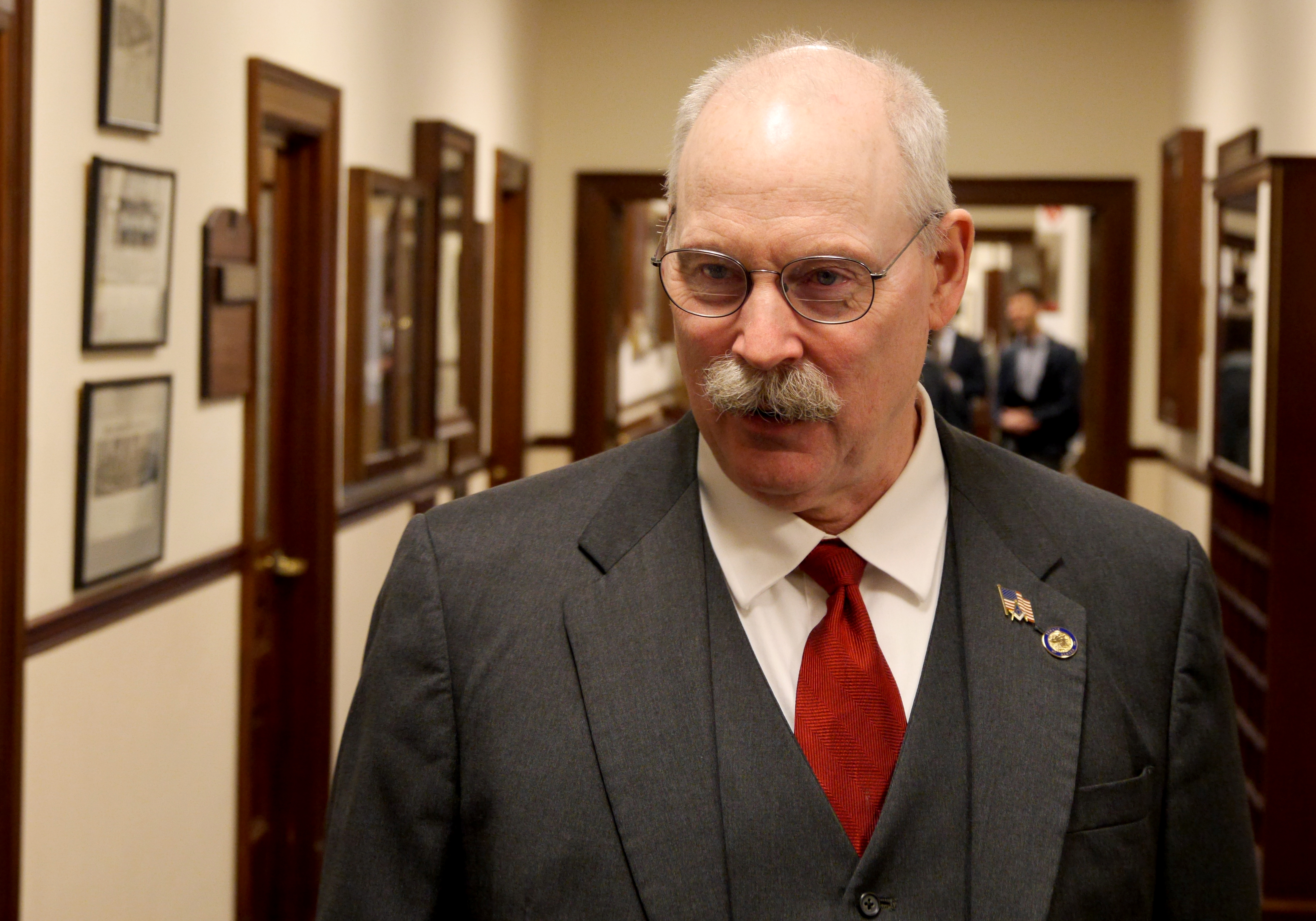
A bill to fund permanent fund dividends of roughly $3,000 failed narrowly in the Alaska Senate on Tuesday.
Supporters said the state should follow the formula set in a 1982 state law. Opponents supported a lower amount, saying the bill requires reckless reductions to state savings and services.
The Senate started off with a version of Senate Bill 1002 that would have provided for a $1,600 dividend. But supporters of larger PFDs successfully amended the bill to raise it to the full amount under the law the state followed until three years ago.
Anchorage Republican Sen. Mia Costello supported the larger dividend. She was part of a Senate majority that voted to reduce dividends the past two years.
“Today on this floor we have a chance to restore public trust that has been broken,” she said. “I support a full dividend until the statute is changed.”

Both Costello and Anchorage Democratic Sen. Bill Wielechowski quoted Jay Hammond, the governor who signed the 1982 dividend law. A quote Wielechowski chose says dividend cuts are a form of regressive taxation.
“Of all the possible taxes, the dividend tax is by far ‘the most regressive, unfair and economically imprudent,'” Wielechowski said. “Children and other Alaskans with only permanent fund dividend income would pay the same amount as millionaires. Non-residents would pay nothing.”
The bill would require an additional $1.3 billion in combined cuts to state spending and savings.
Sen. Jesse Kiehl of Juneau was the only Democrat to oppose the higher amount. He said cuts to services like those proposed by Republican Gov. Mike Dunleavy would hurt vulnerable Alaskans more than lower dividends.
“The only thing that I can think of that is more regressive is cutting Medicaid to working families, or cutting off opportunities for children in poor families through cuts to K-12, through cuts to the university,” Kiehl said.

But Eagle River Republican Sen. Lora Reinbold used strong language to warn against lowering PFDs.
“We would be lawbreakers,” she said. “We’d be taking $1,400 out of every single Alaskan’s pockets. I want to remind people that PFD theft is a (Class) C felony.”
Legislators have expressed concern that the Legislature will repeat whatever action it takes this year in the next session. If a draw required for a full dividend is made both this year and next year, roughly 4% of the combined amount of the permanent fund and fund earnings could be eliminated. It could also cut annual growth by more than $150 million.
Fairbanks Republican Sen. Click Bishop made a fiery speech opposing the full dividend. He said it would put the state on a path to spending the $19 billion in permanent fund earnings in the same way it spent $12 billion in the Constitutional Budget Reserve.
“Furthermore, I want to make sure the people of Alaska get a dividend for now and into the future,” he said. “And I ain’t going to be part and parcel of walking through $19 billion.”
Sitka Republican Sen. Bert Stedman, the Senate Finance Committee co-chair, introduced the committee bill with the $1,600 PFD. He voted against it with the higher amount. He said he compromised on cutting the Alaska Marine Highway System budget, but the higher dividend would hurt coastal communities by putting pressure to eliminate the ferries.

“How do you stand before the Senate, say we’re going to pay a $3,000 dividend and we’re going to take away your transportation system, we’re going to sell it because we don’t like the expenses of it?” Stedman said. “And by the way, here’s $3,000, go get a canoe.”
The vote to amend the bill to have a full PFD passed by a 10-8 vote. But the bill itself failed to pass by an identical vote. That’s because amendments can pass with a majority of those present, but bills require a majority of the entire 20-member Senate, or 11 votes.
Wasilla Republican Sen. Mike Shower and Anchorage Democratic Sen. Tom Begich were both absent due to work commitments. Both support the higher dividend.
The 10 senators who voted for the full PFD included five Republicans and five Democrats. The Republicans generally favor deeper cuts to state spending, while the Democrats favor new revenue, like cutting oil production tax credits. Seven Republicans and Kiehl voted against the bill.
Dunleavy said the Legislature should pass a full dividend and the state budget. He said any change to the dividend formula should go to a vote of the people.
“If folks want to change the statutes or believe that the statutes should be changed, they should engage the people of Alaska, and I think we have plenty of time to do that this summer and fall,” he said in a phone call with reporters.
Dunleavy said he wants the budget to be smaller and believes the state can balance the budget in two years.
The Senate could take back its vote against the bill as soon as Friday. That’s when Shower will be back in Juneau.
If the Senate passes the full PFD, it’s not clear what the House of Representatives would do. The House majority formed with a goal of not spending down state savings.
Watch the latest legislative coverage from Gavel Alaska:
